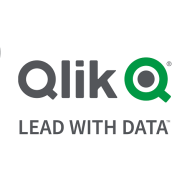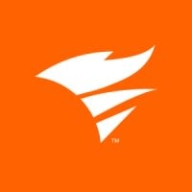

Find out what your peers are saying about Salesforce, Apache, Splunk and others in Data Visualization.
| Product | Market Share (%) |
|---|---|
| Qlik Sense | 6.2% |
| Tableau Enterprise | 17.6% |
| Domo | 8.2% |
| Other | 68.0% |
| Product | Market Share (%) |
|---|---|
| SolarWinds AppOptics | 0.5% |
| Dynatrace | 8.1% |
| Datadog | 6.6% |
| Other | 84.8% |


| Company Size | Count |
|---|---|
| Small Business | 32 |
| Midsize Enterprise | 40 |
| Large Enterprise | 83 |
| Company Size | Count |
|---|---|
| Small Business | 2 |
| Midsize Enterprise | 1 |
| Large Enterprise | 7 |
Qlik Sense is a visual analytics and business intelligence (BI) platform that gives users full control over their system’s data. From this platform they can control every aspect of their system data. It maximizes an organization’s ability to make decisions driven by their data.
Benefits of Qlik Sense
Some of the benefits of using Qlik Sense include:
Reviews from Real Users
Qlik Sense stands out among its competitors for a number of reasons. Two major ones are its associative analytics technology and its remote access capability. Qlik Sense employs an associative analytics engine that gives users the ability to take their data analytics to the next level. Users can create visual connections between different datasets spread across their network, creating deep insights that enable users to gain a full understanding of their data. This engine is easily scaled up to allow a large number of users to benefit from the deep insights that it provides. Users can access Qlik Sense from anywhere in the world. Qlik Sense has an online portal that can be used consistently from anywhere at all. Having the ability to remotely analyze data gives users flexibility when it comes to choosing how to deploy their manpower.
Jarno L., the managing director of B2IT, writes, “The associative technology features are the solution's most valuable aspects. Qlik was the first company to implement an in-memory associative analytics engine. This basically means that all data is loaded into memory, but it also means that instead of joining data together, the data is associated together. From the front end, from the user interface point of view, data can be joined or included or excluded on the fly. It can be drilled down and drilled through and users can slice and dice it and that type of thing can be done from anywhere in the data to any other place in the data. It doesn't have to be predefined. It doesn't have to have hierarchies or anything like that.”
Tami S., the senior business intelligence analyst at the La Jolla Group, writes, “With the changing business landscape, it is nice to access Qlik Sense through an external website. As an organization when we use QlikView Desktop, we need to connect to our internal network. We can access QlikView through the QlikView access point but the website has a little different look and feel than the desktop application. We appreciate that Qlik Sense is browser-based and the user experience is the same whether at home, in the office or on a boat. As long as the user has internet access, performance is the same.”
AppOptics is a SaaS-based simple, powerful and affordable Infrastructure & Application monitoring for custom on-premises, cloud, and hybrid systems.
Your business runs on applications, and when they go down or run slowly, it can impact the business in lost productivity, customers, or revenue. To add to the complexity, your IT environment is changing, and workloads can be spread across data centers, and cloud resources. You need to monitor the availability and performance of applications and infrastructure, regardless of where they are, so you can identify potential issues early and address them before they impact users
We monitor all Data Visualization reviews to prevent fraudulent reviews and keep review quality high. We do not post reviews by company employees or direct competitors. We validate each review for authenticity via cross-reference with LinkedIn, and personal follow-up with the reviewer when necessary.